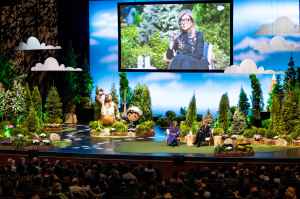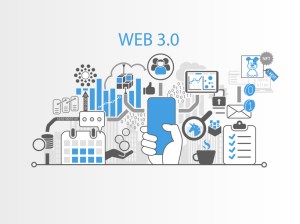Predicting The Growth Of Green Jobs In Canada



There are already more than 430,000 people working in Canada’s green economy. As large as that number is, it only represents the beginning of a bigger trend.

Salesforce Canada
We all have an important role to play in protecting our planet, whether it’s being more mindful of the energy we consume or the everyday purchases we choose to make.
In order to achieve their most ambitious sustainability goals, however, Canadian businesses are recognizing they need to invest in people with specific skill sets and experiences.
This “green workforce” will not only work independently to combat challenges such as climate change. They will also operate in concert with their colleagues in sales, marketing, customer service and all other business functions.
Not every “green job” will require deep specialization, though. In some cases those with a proven track record in more traditional areas of business will simply apply their expertise in new ways. The result will not only prove that business is a platform for change, but that the changes businesses make can endure.
Use the data and guidelines that follow to get a better understanding of what this will mean from a talent acquisition, management and retention perspective.
Canadian Green Jobs By The Numbers
According to research conducted and published by Clean Energy Canada, there are already more than 430,000 people working in the green economy today. As large as that number is, it only represents the beginning of a bigger trend.
By the end of this decade, the study forecasts that Canadian businesses will employ more than 640,000 people in roles related to environmental protection and sustainability.
It’s important to note that this surge in hiring includes areas that have been conventionally associated with industries dependent on the use of fossil fuels. In fact, the data shows Alberta, best known as a heavyweight in the oil and gas sector, will see the greatest increase in green jobs than any other province. Clean energy jobs in Alberta are set to grow by 164% over the next ten years, Clean Energy Canada predicts.
Canada’s green job boom is also in keeping with global trends. In fact, according to a report from the International Labour Organization (ILO) called World Employment and Social Outlook, the shift to a greener economy could create 24 million new jobs around the world by 2030.
Green jobs are so important they have even managed to weather incredible disruptions such as the outbreak of COVID-19. Labour market research from Environmental Careers Organization (ECO) Canada, showed openings for jobs related to the environment grew by 5% during the height of the pandemic in 2020. Within just three years, efforts to attract more green talent will continue to climb by 17%.
How To Assess The Green Jobs You Need To Add To Your Business
One of the quandaries for many Canadian companies, especially those within small and medium-sized businesses, is determining the specific roles they’ll need to fill. After all, many firms have plenty of experience recruiting for marketing, sales or IT jobs. Sustainability can seem like brand new territory.
A good starting point is evaluating your organization’s carbon footprint and setting an appropriate target. This used to be a highly manual and time-consuming process, but platforms like Net Zero Cloud have made carbon accounting faster and faster than ever before.
Once you have a goal, it becomes a matter of putting the right people in place to pursue it. ECO has provided some valuable insight in this area by breaking green careers down into three basic areas of competency.
ECO’s model not only helps companies conduct a green talent self-assessment of sorts, but demonstrates that many existing business skills might be transferable or applicable in driving sustainability.
For example, consider the team you have in place today and ask yourself whether they could contribute their skills to one of these competencies. If not, you’ll know what kind of jobs you’ll be posting:
- Environmental Protection — Preserving our natural resources and reducing the harmful impacts we make demands monitoring everything from air quality to how you’re managing waste. There might be some staff who have the data management and analysis skills to assist with this, and you can provide them new opportunities and challenges such as conducting site assessments and making recommendations to improve sustainability.
- Resource Management — Does the site of your factory threaten the existence of nearby wildlife? Do any processes put fisheries at risk? Even getting a better handle on the company’s energy consumption falls into this category. Those with a project management background and the right aptitude could move here. Otherwise there are a growing number of certifications and programs to produce new candidates.
- Resource Sustainability — This is easily the area that taps into a lot of traditional business acumen. It includes research but also efforts to comply with government policies and regulation. Companies also need to think about how they’ll communicate their environmental efforts with customers and the wider public.
A report from RBC offers an even deeper dive into the green skills shift. It estimates an average 25% to 30% of tasks are already changing. Examples include financial statements that need to factor in carbon emissions levels to designing structures that can withstand fires and floods.
Think Like A Chief Sustainability Officer
Some businesses will eventually put environmental concerns at the executive level, hiring or promoting a chief sustainability officer (CSO) to lead their efforts.
If you’re not quite there yet, you can still think like a CSO. If sustainability represented your entire mandate:
-
What new roles could accelerate the journey to hitting net zero carbon emissions?
-
How can existing business functions evolve to better support sustainability targets?
-
What kind of leadership will spark a cultural shift that rallies everyone around the fight against climate change?
It’s not just a matter of posting green jobs and establishing a green workforce, in other words. Saving our planet for future generations requires a holistic approach that balances bringing on new talent to empowering the existing team with the right data and business practices. It’s a tough job, but maybe one of the most purpose-driven ones you can do.




















